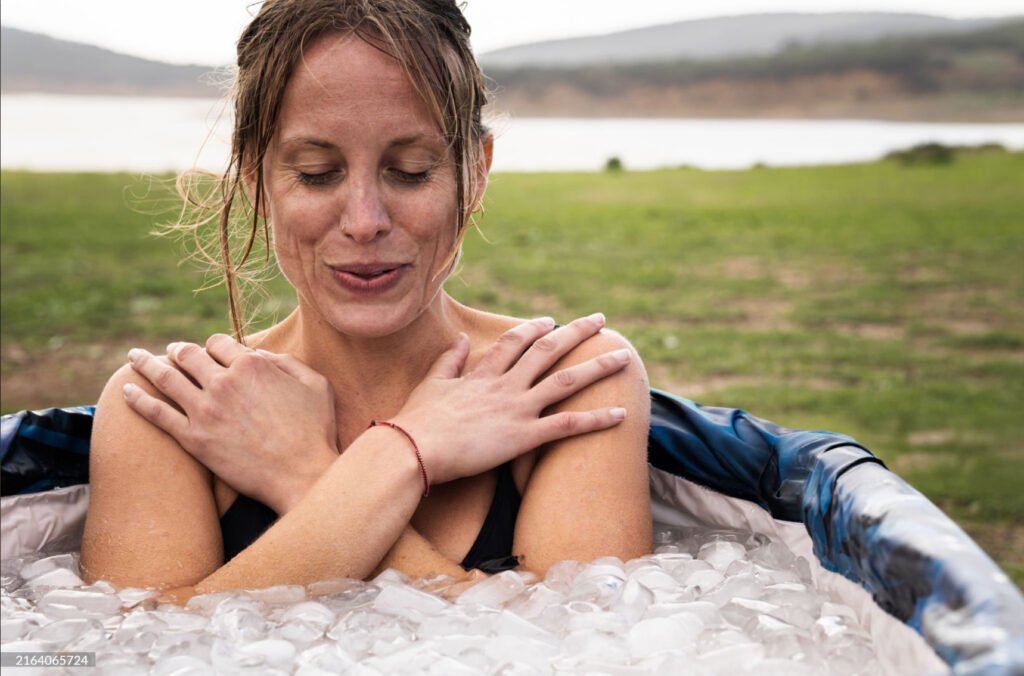Ice Baths Safe for Everyone? Understanding the Best Candidates
Lucie
December 7, 2024

Ice baths, also known as cold water immersion, have become increasingly popular in modern wellness and athletic recovery routines. With roots dating back to ancient civilizations like the Greeks and Romans, who believed in the health benefits of cold water, ice baths are now a mainstream recovery tool for athletes and fitness enthusiasts alike. These cold-water therapies help reduce inflammation, improve recovery, and boost overall well-being.
What Are Ice Baths and How Do They Work?
The concept behind ice baths is simple: immerse the body in cold water, typically around 10 to 15 degrees Celsius (50 to 59 degrees Fahrenheit), for a set period. This practice constricts blood vessels, reducing swelling and inflammation in muscle tissue. When the body warms back up, blood flow returns, delivering oxygen and nutrients to aid in muscle repair.
Physiologically, ice baths trigger the fight-or-flight response, releasing hormones like adrenaline and cortisol. This can increase mental alertness, reduce stress, and even improve focus. As you dive deeper into the benefits of ice baths, it’s crucial to understand who can safely enjoy this practice, and who should exercise caution.
Who Can Safely Take Ice Baths?
Ice baths are effective for specific groups of people, especially athletes who experience intense muscle strain or soreness. Here are some of the best candidates for cold water immersion:
Athletes and Fitness Enthusiasts: Regular ice baths can accelerate recovery after workouts, reducing muscle soreness and inflammation.
Chronic Pain Sufferers: Conditions like arthritis or tendonitis often respond well to cold therapy, as it numbs the pain and reduces swelling.
Post-Injury Recovery: Ice baths can be beneficial for those recovering from sports injuries or surgeries by reducing inflammation and speeding up the healing process.
Who Should Avoid Ice Baths?
While ice baths offer significant benefits, they may not be suitable for everyone. Certain individuals should avoid or take precautions when engaging in cold water immersion:
Cardiovascular Issues: People with heart disease, high blood pressure, or other cardiovascular conditions should avoid ice baths due to the risk of blood pressure spikes and heart strain.
Respiratory Disorders: Conditions like asthma or chronic obstructive pulmonary disease (COPD) can be aggravated by the shock of cold temperatures.
Raynaud’s Syndrome: Individuals with reduced blood flow to the extremities are at risk of discomfort and even more severe attacks due to cold exposure.
Pregnant Women: Cold water exposure could affect circulation to the fetus, so it’s important to consult a healthcare provider before engaging in ice baths.
Extreme Cold Sensitivity: Those who are highly sensitive to cold may experience negative effects, such as hypothermia or frostbite, and should seek alternative recovery methods.
Best Practices for Safe Ice Bathing
To fully benefit from ice baths while minimizing risks, follow these best practices:
1. Optimal Temperature: Keep the water temperature between 50 to 59°F (10 to 15°C) for the most effective recovery without overwhelming your body.
2. Duration: Start with short sessions of 5 to 10 minutes. As your body adapts, you can gradually increase the time, but never exceed 20 minutes per session.
3. Frequency: For recovery purposes, 2-3 times per week is generally sufficient. Overdoing ice baths can cause adverse effects such as increased stress on the body.
4. Post-Bath Recovery: After an ice bath, warm up gradually. Warm blankets, hot packs, and warm drinks can help restore normal body temperature.
5. Monitor Your Body: Pay attention to any signs of discomfort, numbness, or excessive shivering. If these occur, exit the bath immediately.
By following these guidelines, you can safely enjoy the benefits of ice baths while avoiding potential health risks.

Conclusion: Is Ice Bathing Right for You?
Ice baths are a powerful recovery tool for many athletes, fitness enthusiasts, and those with chronic pain. However, they’re not suitable for everyone. It’s important to consult with a healthcare provider if you have any health concerns before incorporating ice baths into your routine. By following the best practices and understanding who should and shouldn’t use ice baths, you can safely maximize the benefits of this proven recovery technique.Link to National Institutes of Health (NIH) – Cold Exposure and Its Effects



